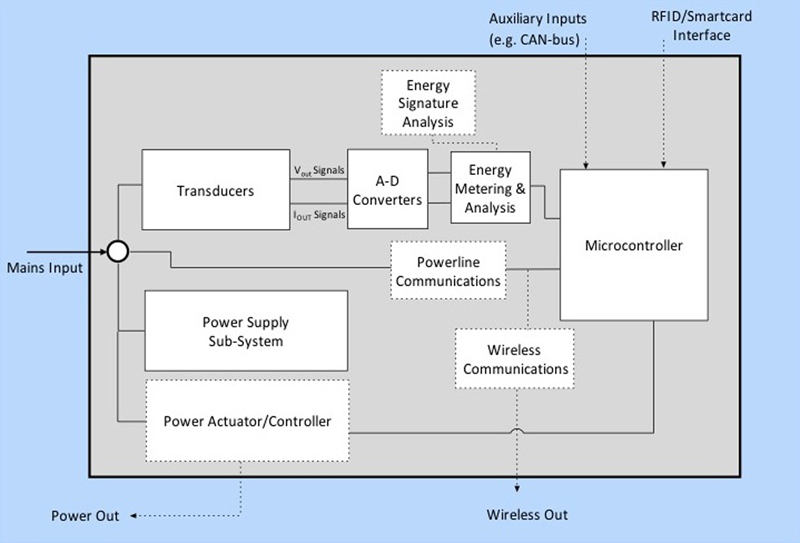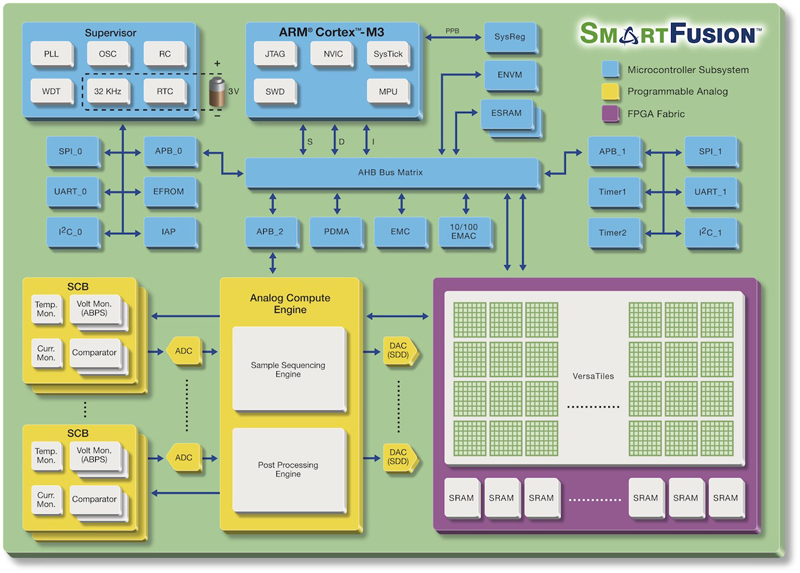The Smart Grid will bring massive changes to the way energy is delivered to homes. If the intent is to make everyone aware of and responsible for their personal energy usage, the Smart Grid is only the start. The new energy infrastructure must take account of usage not just at home but wherever the user is. As an example, the UK radio program "Electric Ride" was broadcast in 2010. A four-man team drove a THINK electric vehicle 4,000 miles across Europe and managed to complete the journey. The problem they faced was finding charging points at regular intervals that would keep their car—which has a range of 100 miles—on the road. Official charging points were few and far between, so the radio had to find ways of keeping the vehicle topped up with the generosity of farmers, restaurant owners and householders. For an electric car, there is as yet no standard way to account for charging away from home or specialized for-pay charging points. As the Electric Ride team discovered, there is not even a standard way of buying energy from a charging point. Cars need not only be net energy consumers. They may and probably will be fitted with solar panels to augment grid-based charging. Parked up for long periods they could contribute energy back to the grid in small amounts. Hydrogen fuel-cell vehicles could generate enough energy in their own right to provide energy to the grid. Similarly, there is no systematic way of tracking our personal energy usage away from home, in a hotel room for example. As a result, most individuals and organizations do not have a clear idea how or where they use energy. By analogy with the financial world, they know the account totals but cannot trace individual transactions. Without this knowledge it is very difficult to identify how energy usage can be reduced or modified with any degree of accuracy. What is needed is a new type of energy accounting system that deals with all the generating capacity and consumption for which an individual, family or company is responsible. This new approach has the name Virtual Energy Account and uses Internet technologies to integrate all the diverse types of information needed. Servers collect the information to identify how energy is consumed and generated, pinpointing each individual energy transaction. As well as making it possible to analyze energy information at home, the system can be used to support energy roaming—usage at different geographic locations— whether it is at a hotel, a leisure center or serviced office. All usage or supply can be identified, metered and charged to the Virtual Energy Account using secure devices to authenticate and authorize energy transactions away from home. By integrating many different energy transactions, the Virtual Energy Account makes possible radical extensions to billing systems. Using modern, Internet-based technologies, it is possible to enable any energy-consuming or generating technology for dynamic tariffs. Electricity distributors can advertise online the availability of tariffs. Sensors and software on the energy appliances pick up the advertisements and, based on programmed rule sets, respond to them. Such sensors can provide another degree of control. An unknown with any scheme today is the condition and efficiency of each appliance. Many are protected by fuses and circuit breakers but these only guard against catastrophic failures, such as short circuits. Many appliances work well enough never to trigger these protection circuits but often provide signs of wear that an appropriate sensor can detect. The energy signature is a concept that can be used to help control these appliances. An energy signature is the combination of measurements taken by an energy sensor. Associated with each signature is a set of rules that define behavior that is acceptable and signals that the equipment should be repaired if it is consuming more energy than it should or, if the signature is a long way out of line, about to fail.

The GreenFire system accommodates these new Virtual Energy Accounts. Two elements make up the GreenFire system: a sensor and a server, which collects the data and provides a real-time energy signature from all of a user's energy flows. The sensor is responsible for measuring power flows and the parameters used to form the energy signature for the attached appliance. It has no display but communicates with the outside world over the Internet. The sensor can take many different forms but is always based on the same underlying architecture. The sensors can be owned by energy service providers, owned and fitted by the consumer or embedded within electrical appliances. A further class, the third-party sensor, provides public energy access points where energy can be downloaded to anyone with the correct authorization. Charging posts and other installations that need a third-party sensor can have a smart card reader input fitted. This enables authentication of the user, as well as transfer of usage data or parameters to a smart card or mobile device. The sensor must be physically small and unobtrusive, potentially able to fit into an electrical socket or be embedded inside an electrical appliance. Although physically small, it must contain physical transducers and analog-to-digital converters, digital signal processing (DSP), logic and cryptographic circuitry, and a microcontroller to handle communications and general processing. The device must achieve a low cost point in order to achieve high market penetration. This implies not just a low piece part cost, but also low non-recurring engineering cost (NRE). Low cost of operation is also important, with power consumption kept to a minimum to prevent the sensors from being significant consumers within the network. Security is mandatory. GreenFire sensors make a tempting target from a security point of view and so must be well protected from hackers. There are many candidate technologies for the GreenFire sensor hardware design, but the SmartFusion™ family of components from Microsemi's SoC Products Group (formerly Actel) provides an ideal substrate. By combining three key pieces of electronic hardware, SmartFusion devices can deliver the high integration necessary to put sensors inside plugs and appliances. A fourth element—security—is inherent in the way the SmartFusion device is designed and manufactured. First, each SmartFusion device contains an ARM® Cortex™-M3 microcontroller subsystem that includes on-chip memory and hardwired peripherals. Second, there is a built-in, tightly-coupled field-programmable gate array (FPGA) fabric with additional static random access memory (SRAM) blocks. The third main subsection in SmartFusion devices is a programmable analog block that can be used to implement front-end sensor functions. It contains a sequencing engine to reduce the load of retrieving samples, providing more horsepower for dealing with GreenFire rule sets.

SmartFusion intelligent mixed signal FPGAs are based on a flash architecture, unlike most other FPGAs, which are SRAM-based. This means that SmartFusion devices retain their configuration once programmed—even after power is removed—and boot almost instantly once power is reapplied. They do not require an external ROM to reconfigure them each time power is applied, helping to maintain high integration and low board space. The flash architecture also helps reduce the power budget; flash cells intrinsically leak less current than SRAM cells. In addition, the use of flash memory provides an important foundation for security in GreenFire systems based on the SmartFusion architecture. The flash can keep cryptographic keys and certificates used in establishing secure network communications on-chip. The boot code required to set up and run these communications channels can all be kept on-chip. Many microprocessors and almost all other FPGAs, in contrast, require off-chip storage of boot code or data, and this makes it virtually impossible to secure them as the program or data can easily be monitored or tampered with at the circuit board level. In most cases, tampering with an integrated circuit is much more difficult than at the board level. In a typical GreenFire sensor implementation, the FPGA fabric is used for real-time signal processing to help determine quantities such as the power factor and the harmonic content. The results can be used for early warning of potential failures. Performing signal processing in the FPGA fabric rather than in the microcontroller leaves more time for the microcontroller to perform control tasks. The result is a smart sensor for the Smart Grid. To cope with the much greater emphasis on efficiency that government policies will encourage, the grid must evolve, become smarter and embrace the concept of the Virtual Energy Account. Internet technologies coupled with a secure, high-integration hardware platform can provide the intelligence needed to take maximum advantage of low-carbon energy sources, optimize consumption and reduce consumer costs. Based on Microsemi hardware, the GreenFire system can provide the basis for this new smarter grid and make sure people can get around on electric power. www.microsemi.com